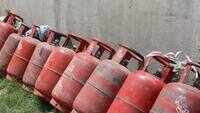
Ranchi: Employment generation under Mahatma Gandhi National Rural Employment Gurantee Act (MNREGA) was dismal in Jharkhand in the month of May compared to same period in the last five fiscals.
Unemployment data maintained by Centre for Monitoring Indian Economy (CMIE) data shows that six out of every 10 job seekers are unemployed in Jharkhand in May. At 59.2%, the state has the highest joblessness rate in the country. The figure was 8.2% in March, before the nationwide lockdown was imposed. Over a longer time period, unemployment has moved from 1.6% in Jul 2017 to its current rate.
With the scheme, which aims to guarantee the ‘right to work’, assuming immense importance because of job losses and return of migrants amid the pandemic, figures suggest the total jobs (person days) created last month was comparable to the figures in the 2015-16 fiscal, when 60 lakh man-days of work was generated in May. Even last year, around 80 lakh man-days of work was available during this month. Between 2015-16 and 2020-21 fiscal, 2016-17 saw the highest job creation with over 1.4 crore man-days.
Jharkhand Janadhikar Mahasabha, a conglomeration of different rights group, has compiled the data for May through Government of India’s MNREGA website.
In view of the influx of migrants, chief minister Hemant Soren on May 4 had rolled out three flagship MNREGA schemes aimed at generating mass employment for those hit by the lockdown and reviving the rural economy. The schemes — Birsa Harit Gram Yojana, Neelambar Pitambar JAL Sammridhi Yojana and Poto Ho Khel Vikas Scheme — aimed to absorb about six lakh migrant workers in addition to the existing job card holders in the state.
Talking to TOI, James Herenj, convenor of Jharkhand NREGA Watch, an independent outfit working in this field, said that limited scope of works compared to the demand is one of the biggest reasons for poor job creation. He said, “Currently, there is heavy demand for MNREGA works, but scope of work is limited to activities like digging trenches, PM Awas Yojana, plantation and a few more minor works. The government needs is to open up big public projects so that people can be accommodated in large numbers.”
Panchayat and block offices shutting down because of the lockdown are other reasons. He said, “Even if I need work, there is no one to give one as officials responsible to create muster rolls (creation of job account) are engaged in Covid duty.”
Siraj Datta, one of the functionaries of Jharkhand Janadhikar Mahasabha, said though the slow-paced trend is slowly picking up in last week, the state government has to act faster. He said, “If people don’t get work for a long time, they will again start migrating in search of livelihood. This isn’t advisable during a pandemic. The government must open large public projects under MNREGA and start weekly cash payment system. We have already demanding this during our last meeting with the rural development department.”
State rural development minister Alamgir Alam said the situation will improve soon as his department is working on various levels to speed up job creation in rural areas. He said, “During the lockdown, the number of jobs generated became zero, but since relaxation in rural areas in the last week of April, we have managed to churn out more than 5 lakh jobs so far. Things will pick up pace now as all districts have been asked to create maximum jobs at village and block levels.”
He added that to accommodate migrants into MNREGA jobs, they have begun counselling at quarantine centres to issue job cards. Alam said, “We have given new job cards to about 62,000 migrants of which about 6,000 have already started working. We are also mapping migrants to place them in private firms as per their sets.”
Unemployment data maintained by Centre for Monitoring Indian Economy (CMIE) data shows that six out of every 10 job seekers are unemployed in Jharkhand in May. At 59.2%, the state has the highest joblessness rate in the country. The figure was 8.2% in March, before the nationwide lockdown was imposed. Over a longer time period, unemployment has moved from 1.6% in Jul 2017 to its current rate.
With the scheme, which aims to guarantee the ‘right to work’, assuming immense importance because of job losses and return of migrants amid the pandemic, figures suggest the total jobs (person days) created last month was comparable to the figures in the 2015-16 fiscal, when 60 lakh man-days of work was generated in May. Even last year, around 80 lakh man-days of work was available during this month. Between 2015-16 and 2020-21 fiscal, 2016-17 saw the highest job creation with over 1.4 crore man-days.
Jharkhand Janadhikar Mahasabha, a conglomeration of different rights group, has compiled the data for May through Government of India’s MNREGA website.
In view of the influx of migrants, chief minister Hemant Soren on May 4 had rolled out three flagship MNREGA schemes aimed at generating mass employment for those hit by the lockdown and reviving the rural economy. The schemes — Birsa Harit Gram Yojana, Neelambar Pitambar JAL Sammridhi Yojana and Poto Ho Khel Vikas Scheme — aimed to absorb about six lakh migrant workers in addition to the existing job card holders in the state.
Talking to TOI, James Herenj, convenor of Jharkhand NREGA Watch, an independent outfit working in this field, said that limited scope of works compared to the demand is one of the biggest reasons for poor job creation. He said, “Currently, there is heavy demand for MNREGA works, but scope of work is limited to activities like digging trenches, PM Awas Yojana, plantation and a few more minor works. The government needs is to open up big public projects so that people can be accommodated in large numbers.”
Panchayat and block offices shutting down because of the lockdown are other reasons. He said, “Even if I need work, there is no one to give one as officials responsible to create muster rolls (creation of job account) are engaged in Covid duty.”
Siraj Datta, one of the functionaries of Jharkhand Janadhikar Mahasabha, said though the slow-paced trend is slowly picking up in last week, the state government has to act faster. He said, “If people don’t get work for a long time, they will again start migrating in search of livelihood. This isn’t advisable during a pandemic. The government must open large public projects under MNREGA and start weekly cash payment system. We have already demanding this during our last meeting with the rural development department.”
State rural development minister Alamgir Alam said the situation will improve soon as his department is working on various levels to speed up job creation in rural areas. He said, “During the lockdown, the number of jobs generated became zero, but since relaxation in rural areas in the last week of April, we have managed to churn out more than 5 lakh jobs so far. Things will pick up pace now as all districts have been asked to create maximum jobs at village and block levels.”
He added that to accommodate migrants into MNREGA jobs, they have begun counselling at quarantine centres to issue job cards. Alam said, “We have given new job cards to about 62,000 migrants of which about 6,000 have already started working. We are also mapping migrants to place them in private firms as per their sets.”

Coronavirus outbreak
Trending Topics
LATEST VIDEOS
City
 Watch: Video proof of Pak diplomat spying with a decoy sent by the Indian Intelligence Agency
Watch: Video proof of Pak diplomat spying with a decoy sent by the Indian Intelligence Agency  Unlock 1.0: Non-subsidized LPG gas price hiked by Rs 11.50 in Delhi
Unlock 1.0: Non-subsidized LPG gas price hiked by Rs 11.50 in Delhi  Covid-19 crisis and lockdown: Delhi CM Arvind Kejriwal seeks public suggestions
Covid-19 crisis and lockdown: Delhi CM Arvind Kejriwal seeks public suggestions  India unlocks: Guidelines issued to taxi services operating to and from Delhi Airport
India unlocks: Guidelines issued to taxi services operating to and from Delhi Airport
More from TOI
Navbharat Times
Featured Today in Travel
Quick Links
Kerala Coronavirus Helpline NumberHaryana Coronavirus Helpline NumberUP Coronavirus Helpline NumberBareilly NewsBhopal NewsCoronavirus in DelhiCoronavirus in HyderabadCoronavirus in IndiaCoronavirus symptomsCoronavirusRajasthan Coronavirus Helpline NumberAditya ThackerayShiv SenaFire in MumbaiAP Coronavirus Helpline NumberArvind KejriwalJammu Kashmir Coronavirus Helpline NumberSrinagar encounter
Get the app



